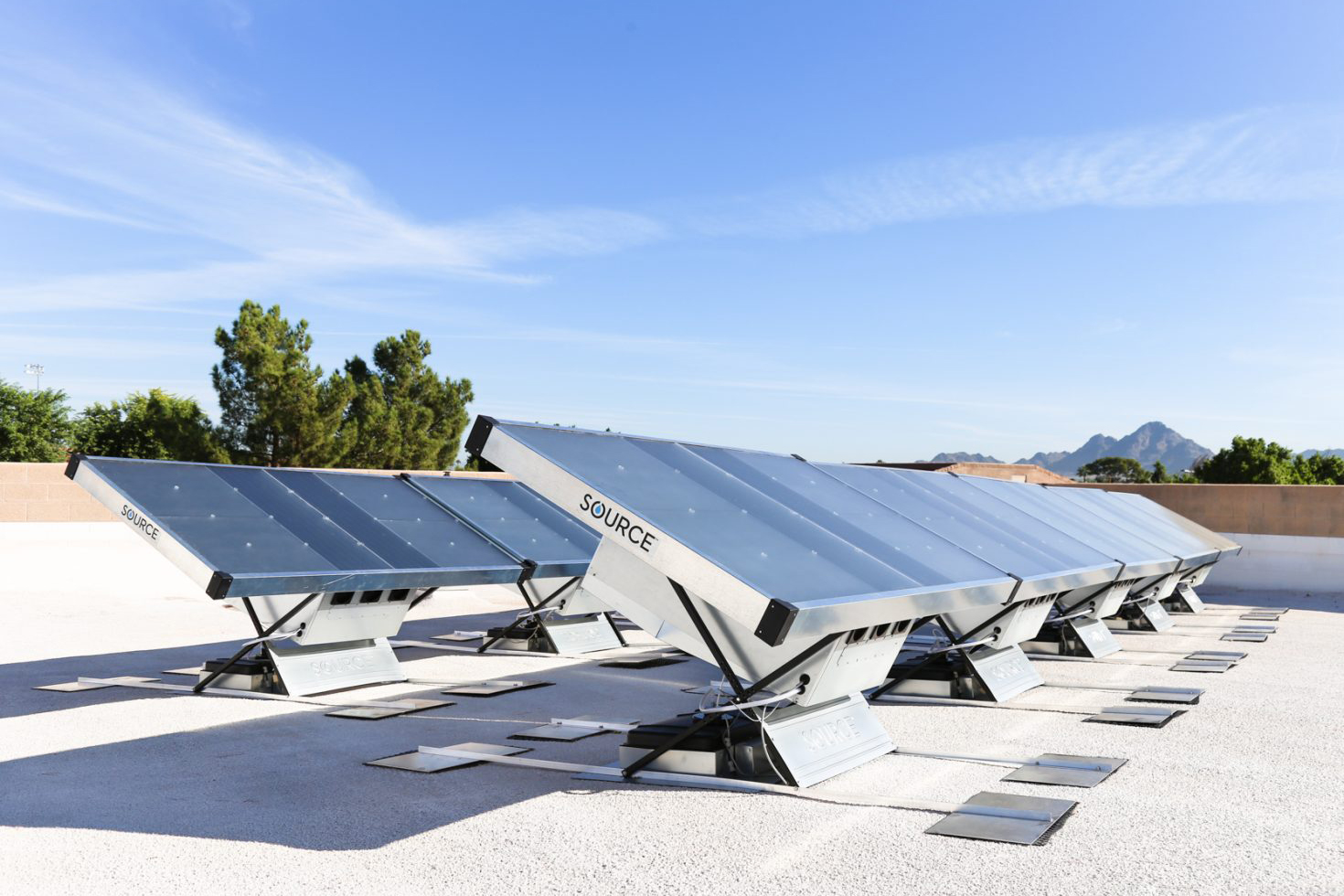
People across Australia may soon drink clean water pulled straight out of thin air. The water will be supplied by an array of solar-powered devices developed by Zero Mass Water, an American startup specializing in technology that can extract water from the atmosphere.
“Zero Mass Water’s ‘hydropanel’, called Source, creates clean drinking water from sunlight and air, so that every person in nearly every climate and corner of the world can produce their own water,” Cody Friesen, Zero Mass Water CEO, told Digital Trends “It’s that simple — if the sun is shining, Source makes drinking water.”
Thanks to $420,000 in funding from the Australian Renewable Energy Agency (ARENA), Zero Mass Water will install 150 Source hydropanels in various locations around the country, including in Sydney, Perth, and Adelaide.
Friesen compares his company’s hydropanels to rice in a salt shaker. Fans in the hydropanels help pull surrounding air through an air filter, which attracts water molecules and funnels them to a reservoir.
“The water is collected as pure water vapor, is desorbed into an airtight system, and is converted to liquid form,” he said. “This liquid water flows into the Source reservoir, where it is mineralized with calcium and magnesium for taste and health benefit, stored, and then delivered straight to your tap, ready to drink.”
Each individual hydropanel can collect between three and five liters of water per day on average, according to the company, and has the potential to extract enough potable water over 15 years to replace 20,000 plastic bottles.
Raised in the Sonoran desert, Freisen said water scarcity was a feature of his life since childhood. But it wasn’t until he traveled abroad as an adult that he realized people all over the world suffer from lack of clean drinking water.
“With this in mind, we worked in my lab on developing the materials science, fluid dynamics, and thermodynamics it would take to solve this issue,” he said. “Ultimately, we found an incredibly efficient way to use solar energy to produce clean, great-tasting drinking water from the sun and air.”
The pilot project will see Source hyropanels placed in airports, cafes, and commercial buildings around the country. A third-party study will help assess the impact of the bottle water reduction in the country.
Correction: This article has been updated to reflect that the average number of liters collected by a hydropanel per day is three to five liters.


